When you gaze up at the night sky, it looks like a lot of stars are on their own. But a solitary-looking star may be a member of a group. If we wind the clock back millions of years, we may find these stars forming in the same vast cloud of dust and gas.
Known as open clusters, these families of anywhere from a few dozen to a few thousand stars are created in the dusty spiral arms of our Galaxy.
They travel together through space, but gentle tidal forces eventually cause the stars to move apart until they begin to merge into the general starry background.
Read more about stars:
There are many fine examples of newer and older star clusters out there, perfect for looking at with binoculars (read our top tips for binocular astronomy).
As a rule of thumb, you can pretty much assume that the younger the open cluster, the more compact it appears, since the stars haven’t had much time to drift apart.

Globular clusters
Globular clusters are much bigger than open clusters, consisting of hundreds of thousands or millions of generally reddish, older stars.
Whereas open clusters are found and made within the plane of our Galaxy, globular clusters form a halo around it and their creation is much less well understood.
In terms of observing, this all means that the majority of open clusters are found in or close to that misty river of stars stretching across the sky, the Milky Way, while globular clusters are seen all over the sky.
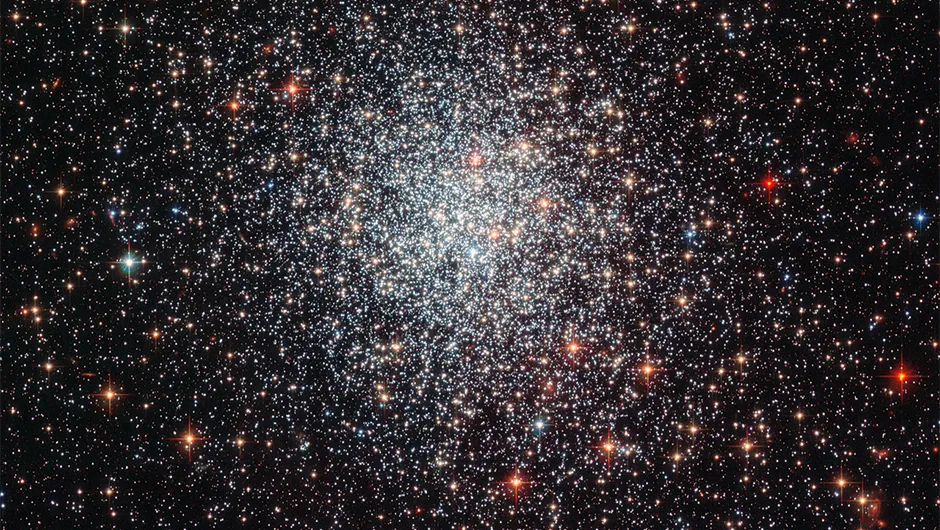
When looking at them with the naked eye you’ll see only fuzzy patches, but a pair of binoculars will reveal some truly spectacular gems.
Have a go at seeing whether you can spot some star clusters for yourself. Below we've listed 10 of the best to observe in the night sky.
5 open clusters to spot in the night sky
1
M45
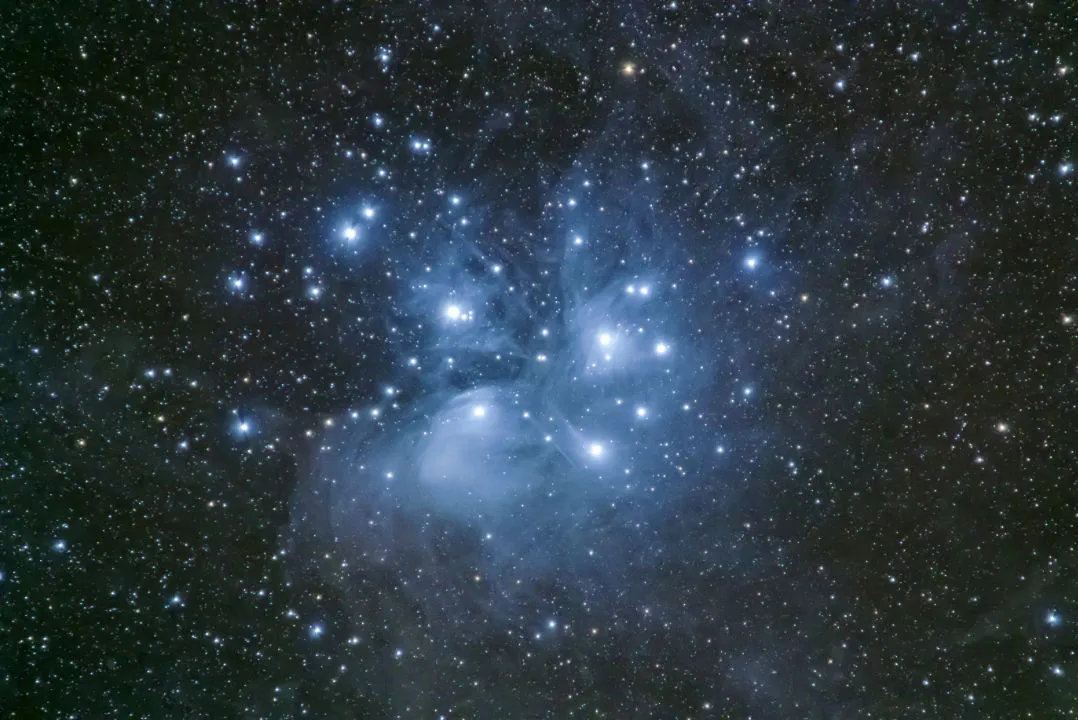
Constellation Taurus
RA 03h 45m 48sdec. 24° 22’ 00”
The Pleiades, or Seven Sisters, is one of the most splendid clusters in the night sky. With the naked eye, six stars of the cluster are easy to see, but counting up to 10 is possible. The cluster actually contains many hundreds of stars, and a decent pair of binoculars will be able to reveal many of them.
2
NGC 869 and NGC 884

Constellation Perseus
RA 02h 19m 00sdec. 57° 09’ 00”
This is the ‘Sword Handle’, a wondrous double cluster with two star clusters sitting side by side. They are both 0.5º in diameter and are easily visible to the unaided eye. Try sweeping the area with binoculars – the hundreds of stars, set against the backdrop of the Milky Way, make for a fine sight.
3
M7

Constellation Scorpius
RA 17h 53m 54sdec. –34° 49’ 00”
Also known as the Ptolemy Cluster, this appears to be twice the size of the full Moon. To the eye, the 80 stars of the cluster appear as a bright clump in the Milky Way, but through binoculars the stars are resolved.
4
M35
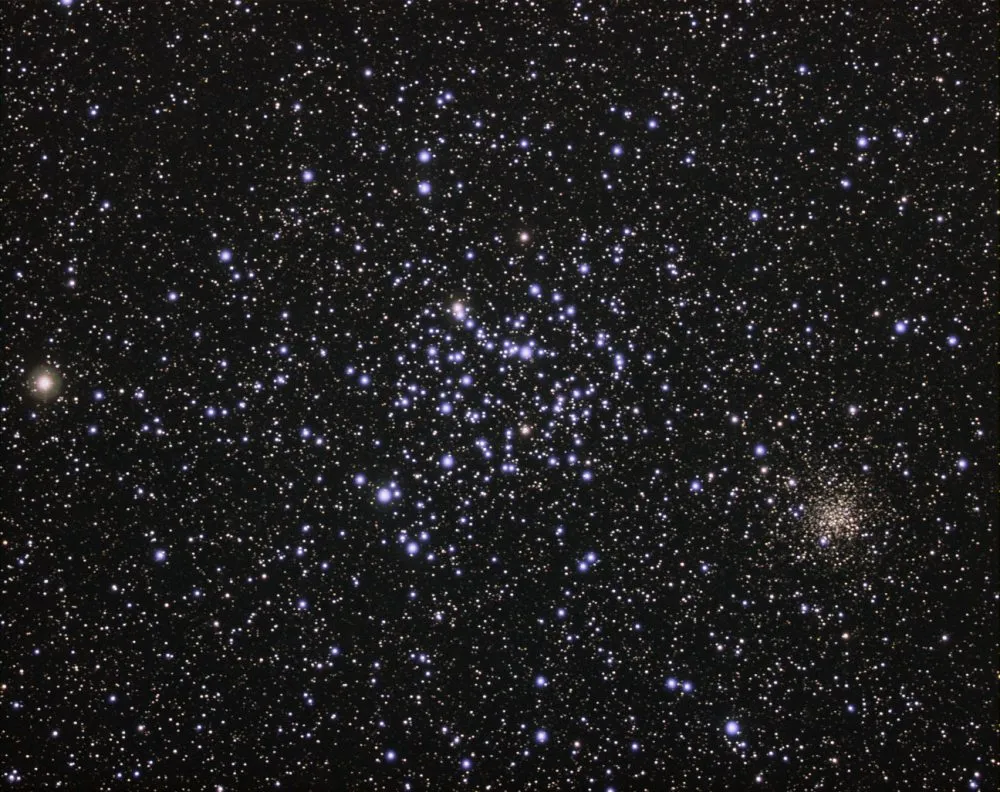
Constellation Gemini
RA 06h 08m 54sdec. 24° 20’ 00”
This cluster contains upwards of 200 stars and can just be seen with the unaided eye on good clear nights. Binoculars bring out the brightest 20 or so stars, while the rest form a diffuse oval wash behind.
5
M44

Constellation Cancer
RA 08h 40m 06s dec. 19° 59’ 00”
Known as the Beehive Cluster, M44 contains hundreds of stars and can be seen as a misty patch with the naked eye. Binoculars are the best way to see M44: through them you’ll see a dozen or so of its brightest stars.
5 globular clusters to spot in the night sky
6
M13

Constellation Hercules
RA 16h 41m 42sdec. 36° 28’ 00”
Known as the Great Globular Cluster, this is the best of its kindin the northern hemisphere. From a dark site, M13 canjustbe seen with the unaided eye, but its bright, round formis a stunning sight through a pair of binoculars.
7
M5
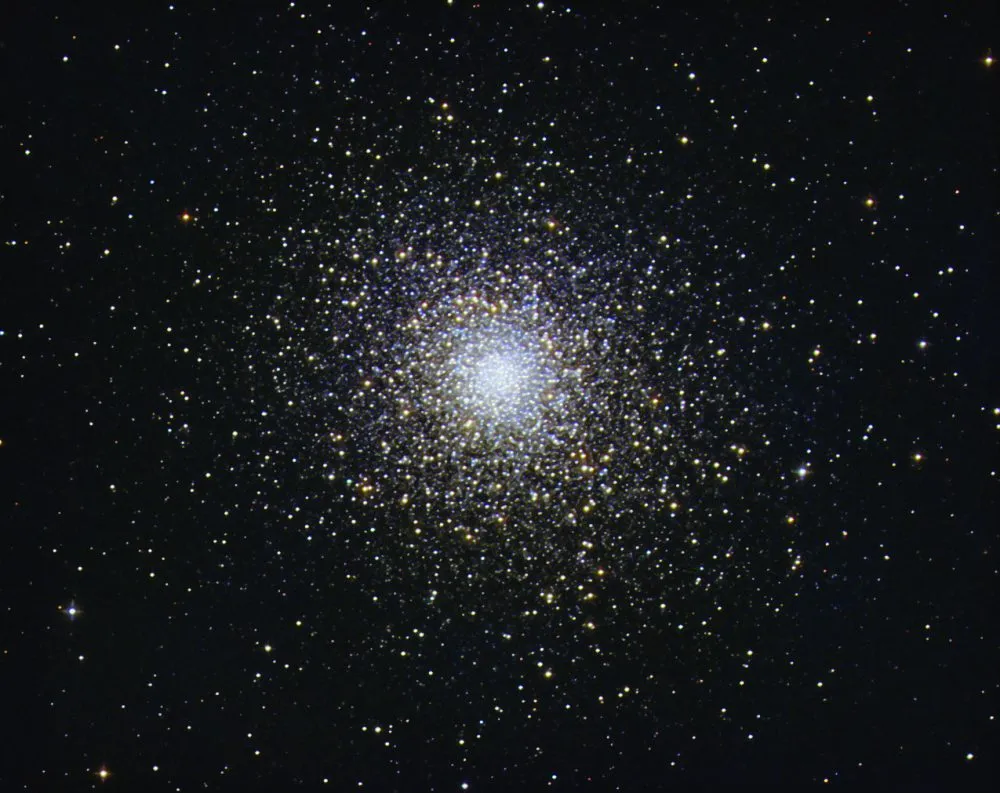
Constellation Serpens
RA 15h 18m 36sdec. 02° 05’ 00”
This is thought to be one of the oldest of all globular clusters. Itis easily found in binoculars and has a slightly oval-shaped appearance. What you’ll see is a fuzzy blob, hinting at the vast number of stars itcontains.
8
M3

Constellation Canes Venatici
RA 13h 42m 12sdec. 28° 23’ 00”
This is another stunning globular cluster. It can just be seen with the unaided eye, but binoculars will reveal its bright, round shape that holds around 500,000 stars. 274 of these are known to be variable, the largest number in any known globular cluster.
9
M22
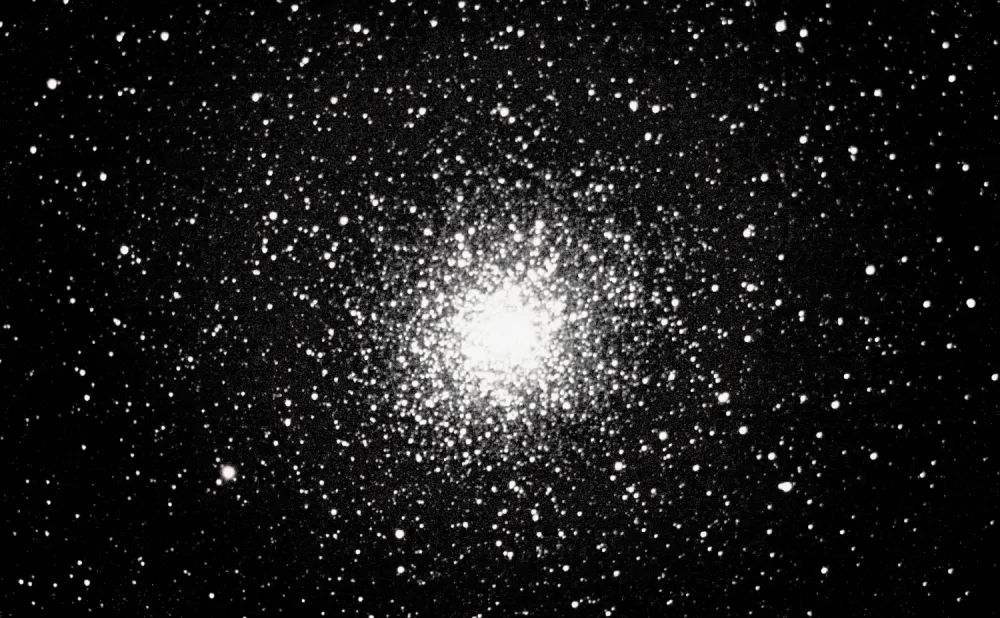
Constellation Sagittarius
RA 18h 36m 24s dec. –23° 54’ 00”
One of the brightest globular clusters, M22 is easily visible with the unaided eye, and agreat sight through binoculars. It’s larger than M13, which is impressive, but its place in the Milky Way’s river of stars makes this areal jewel in the crown.
10
M15
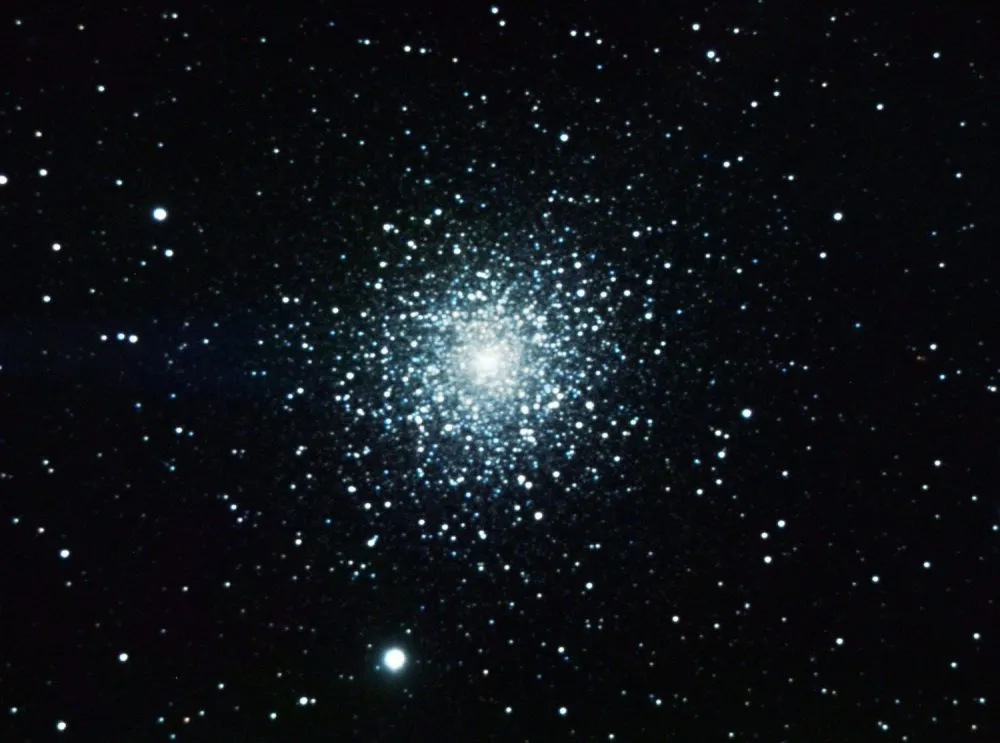
Constellation Pegasus
RA 21h 30m 00sdec. +12° 10’ 00”
Looking like a slightly more compact M13, this densely packed object is an ideal target for binoculars. It appears as a round smudge with quite a compact central region, giving this distant star cluster a real sense of depth.]
What are your favourite star clusters? Have you managed to capture an image of any? Let us know by emailing contactus@skyatnightmagazine.com or get in touch via Facebook, Twitter or Instagram.